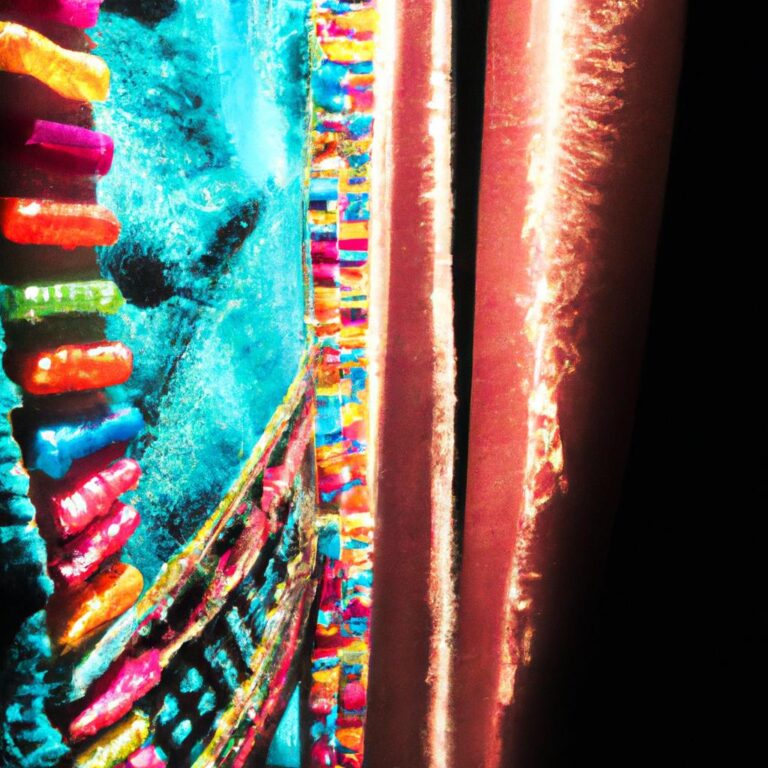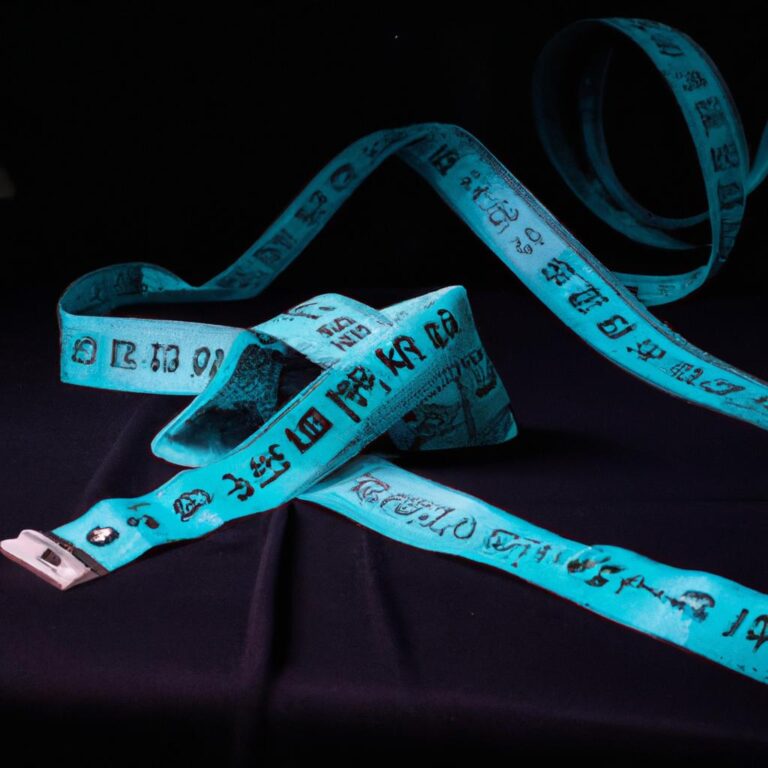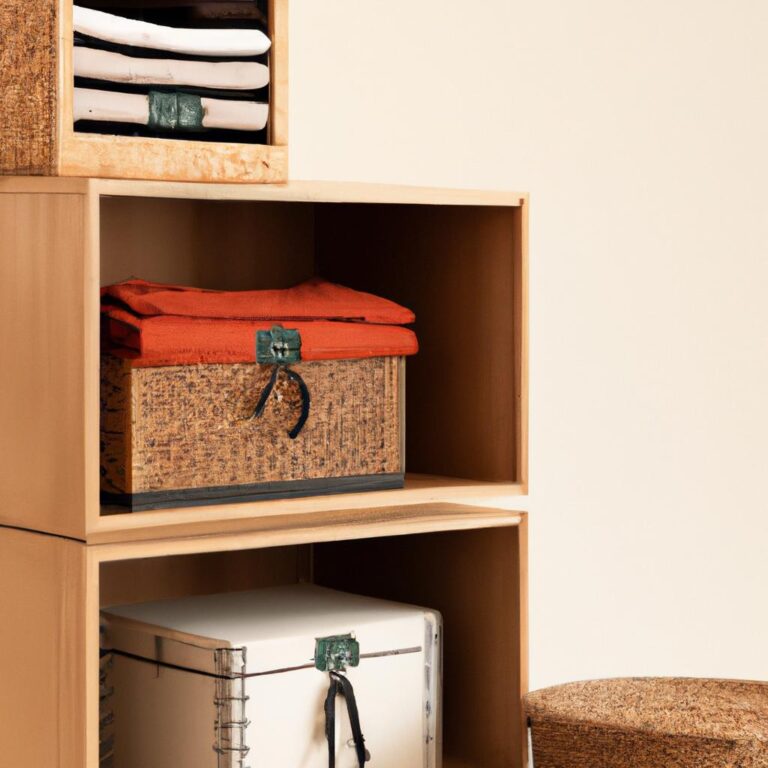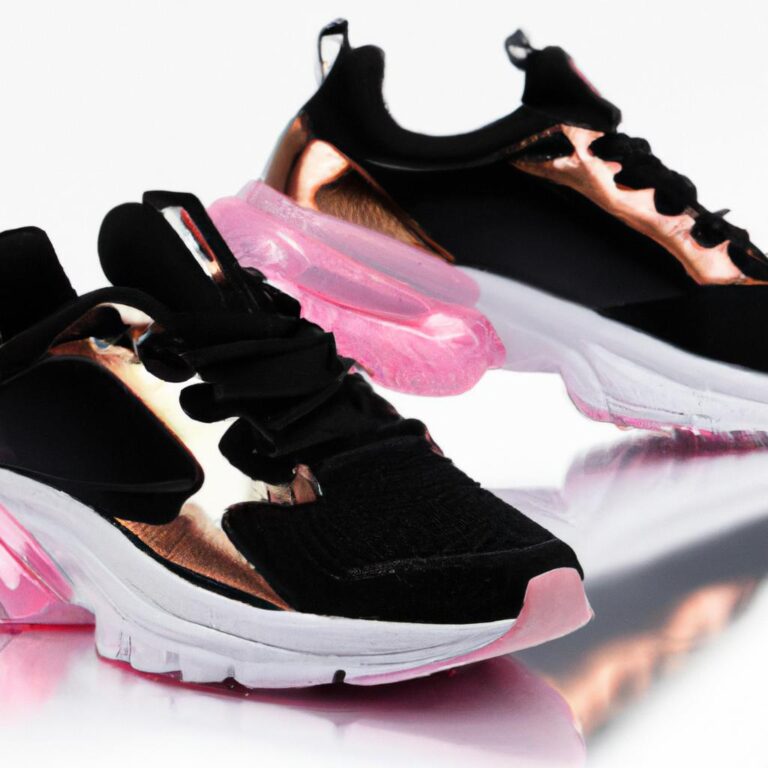
The Role of Technology in Fashion: From Design to Retail
Technology has had a profound impact on the fashion industry, from its inception at the design level right to the product being sold at retail. By leveraging technology, trends are able to shift at a faster pace, responding to customer needs and wants. In this guide, we will explore the various applications of technology used in the fashion industry today and how they are transforming the way we create, produce and market fashion items.
Historical Role of Technology in the Fashion Industry
Technology has long been used in the fashion industry to create designs that are closer to reality and more accurately reflect customer needs. For example, computer-aided design (CAD) systems have been used for decades to help create patterns and designs. Today, technology is being used to streamline the entire fashion process, from design to production and retail.
Fashion-Specific Technologies Used Today
The technologies used in the fashion industry today range from 3D printing and software to CAD/CAM systems. These allow fashion designers to quickly create patterns and sample garments. Additionally, digital fashion platforms are being used to collect data and insights that can be used to better understand customer preferences and create improved designs.
Advantages and Disadvantages of Technology in Fashion
Technology has brought many advantages to the fashion industry, such as increased cost efficiency and quicker time-to-market for fashion products. However, it has also created competition and made it more difficult for traditionally-designed fashion manufacturers to stay ahead of the curve. Additionally, emerging markets may be affected by the use of technology in fashion, resulting in a decrease in locally-created designs.
Impact of Social Media Presence on Fashion Technology
The rise of social media platforms has had a major impact on fashion technology as well. With an increased presence on social media, fashion companies have been able to target their customers more precisely, allowing them to tailor their designs to the exact wants and needs of their consumers. Additionally, fashion marketing campaigns are now being driven by influencers, creating even further opportunities for fashion brands to reach their target audiences.
Future Implications of Technology in Fashion
As technology continues to evolve, so too will the fashion industry. New technologies will open up new possibilities in terms of design, production and retail. Additionally, consumer engagement with fashion brands will be further enhanced by the use of technology, driving more sales and creating opportunities for deeper relationships between customers and fashion companies.
The Role of Technology in Fashion: From Design to Retail
Since the dawn of the industrial age, technology has played a pivotal role in revolutionizing processes and systems in the fashion industry. From design to retail, this technological advancement has facilitated not only faster production time but also better design quality, increased customization and improved cost-efficiency. In this guide, we will unpack the extensive role of technology in the fashion industry, and provide insight on how trends such as sustainability and ethical sourcing have been impacted by its usage.
Historically, technology has had an integral role in the fashion industry, enabling various processes to be streamlined and more efficient. For example, traditionally, sketches and drawings of garments were manually rendered, with the physical prototypes subsequently created. Nowadays, computer-aided design (CAD) and Computer-aided manufacturing (CAM) software have enabled the digital rendering of garments, thus simplifying the design process. Not only does this save time, but it also permits easier technical specifications to be added and managed. These tools are now widely used in the fashion industry, facilitating the quick and accurate design and production of garments.
Other advances in technology have allowed for quicker and more customized production. 3D printing has enabled the rapid prototyping of garments, allowing for customer feedback to be incorporated quickly. Moreover, product data management (PDM) software allows for the efficient collation of data from multiple sources without duplication. Automated cutting machines can cut fabric quickly and accurately, with laser cutters being employed to create intricate detailing. Furthermore, e-commerce platforms such as Shopify are becoming increasingly popular, allowing businesses to easily showcase their products and services online.
In terms of design, technology has enabled the fashion industry to produce clothing in increasingly creative ways. The use of digital tools has allowed for faster turning of designs from concept to production, thus increasing the speed at which new ideas can be converted into tangible pieces. It has also allowed for greater customization of design, as designers are better able to control and refine the details of their creations. In addition, modelling software can be used to create realistic simulations of fabrics before they are created, eliminating the need for costly sample making.
The role of technology in fashion has also been influential in terms of retail. The development of automated warehousing systems has helped to reduce the time needed to store and distribute stock. Smart tagging has become increasingly popular, allowing customers to track their orders from production to delivery, providing them with detailed information and enhanced customer service. In addition, technologies such as machine learning and artificial intelligence are being leveraged to create personalised shopper experiences that are tailored to individual customers’ needs.
Overview of Fashion-Specific Technologies
Today, technology plays an important role in all aspects of the fashion industry, from design to retail. Technology is used in fashion for a variety of tasks, including helping designers create innovative and modern designs, making efficient production possible, allowing for faster retail turnarounds, and more. Some of the most commonplace technologies used in fashion include 3D printing, software, CAD/CAM, and robotics.
3D printing, or additive manufacturing, uses layering techniques to form 3D objects from digital blueprints. This technology is being used in the fashion industry to create custom items that were previously impossible to produce in mass quantities. 3D printing has also been used to create molds and tooling for shoe outsoles, and even to make one-of-a-kind denim garments.
Software offers a number of advantages to the fashion industry. It is capable of simulating what a finished garment would look like, helping to speed up the design process. Many fashion companies rely on specialized software such as Adobe Photoshop and InVision for design and product development, while others use Enterprise Resource Planning (ERP) software to keep track of inventory, orders, and supply chain optimization.
CAD/CAM (Computer Aided Design/Computer Aided Manufacturing) is another technology commonly used in the fashion industry. Thanks to this tech, designers can create exact replicas of their original designs and easily turn them into products. It has also made it easier for factories to produce high-quality garments quickly and efficiently. Additionally, CAD/CAM is being used in the fashion industry for automatic pattern cutting, embroidery, and other tasks.
Lastly, robotics are playing an increasingly important role in the fashion industry. From robotic arms operating on assembly lines to robot-operated fabric inspection systems, robots have revolutionized the production process in the fashion industry. Robot automation has enabled quicker turnaround times, lower labor costs, and improved quality control.
Advances in Design
Technology has enabled the fashion industry to make leaps and bounds in design. Presently, technology has allowed for an increase in customization, providing consumers with a more personalized experience. It has also sped up the design process, streamlining workflows, reducing costs, and enabling faster production time for retailers.
3D printing is an example of how a new and innovative technological advancement has revolutionized the design world. 3D printing has made it possible for designers to quickly construct custom wearable garments and accessories. This technology has been embraced by both fashion designers and consumers alike, allowing those in the industry to create garments that were once impossible to make by traditional methods.
In addition to 3D printing, advancements in software such as CAD/CAM systems have enabled fashion designers to create professional sketches, drapes, spec sheets, and patterns with relative ease. This technology has drastically reduced the amount of time required to create a sample, further streamlining the design process.
How Technology Enables Faster Retail Production Time
Historically, the production of clothing would take months to develop, manufacture and then arrive in stores. Today, technology has revolutionized the fashion industry, with the use of computer-aided design (CAD) software, 3D printing, robotic systems, and artificial intelligence (AI). These advances have allowed for faster production timelines and better quality products.
The development process creates a digital model of the garment which is then sent to the factory for production. This method eliminates the need for physical patterns, resulting in less waste being produced. Additionally, CAD technology allows designers to visualize how a garment will look before it is created, saving time and money on revisions.
Robotic systems are used to automate tasks such as cutting, sewing, and dyeing. This is beneficial for exact and repetitive processes, as it is more precise and increases speed. For example, companies like Kuka Robotics have automated the production line and are able to mass-produce clothing in a fraction of the time it takes traditionally.
Finally, AI helps improve efficiency in supply chain management by helping to forecast trends, determine inventory needs, and optimize production schedules. AI helps businesses stay ahead of the curve by being able to anticipate consumer needs and preferences.
In conclusion, technology has enabled faster retail production timelines and improved the quality of clothing produced. Additionally, advances in technology have allowed for more efficient supply chain management, which leads to a quicker turnaround time from design to retail.
Recent Technology Usage Trends in Fashion
In recent years, the use of technology in the fashion industry has exploded and taken on many forms, with sustainability and ethical sourcing being two of the most important areas of focus. Companies are utilizing different techniques and software programs to create items that are not only aesthetically pleasing, but also environmentally friendly and ethically compliant.
Technologies such as 3D printing and CAD/CAM have enabled designers to produce complex designs in a much shorter time frame, with fewer materials than was previously possible. By creating patterns digitally, it is also possible to produce items with less waste and therefore reduce their environmental impact. Additionally, modern technologies can provide an insight into the production process and make it easier for buyers to trace their garments back to their original source, making sure they source ethically.
As the fashion industry evolves, more and more companies are taking steps to ensure their production processes are as transparent as possible. Consumers are becoming more conscious of their purchases and wanting to know the stories behind the clothes they’re buying. With this shift in consumer attitudes, companies are relying on technology to ensure that they are providing quality products that are made responsibly and with minimal environmental impact.
The Impact of Social Media on Fashion Technology
In the last few years, we have seen social media become integral to many aspects of our lives. It has become more than just a way to interact with friends – it is now also being used in the fashion industry. As the use of social media continues to grow and evolve, so does its impact on fashion technology.
Social media has allowed fashion brands to reach their target market in an unprecedented way. Companies are now able to quickly showcase new designs and trends to their customers, allowing them to make more informed purchasing decisions. In addition, the use of social media has allowed companies to build interactive relationships with their customers, allowing for two-way conversations that were not possible in the past.
Social media platforms have also allowed fashion companies to conduct market research in real time. Companies can measure customer response to different products, colors, and styles within minutes of launching them. This helps fashion companies to quickly adjust their product lines accordingly.
Further, the use of social media has enabled fashion companies to increase their sales by providing targeted discounts and promotions to potential customers. This encourages customers to purchase items that they may not have otherwise purchased.
Finally, the use of social media has also allowed fashion companies to stay ahead of the competition. By staying abreast of the changing trends, companies can innovate quickly and stay ahead of the curve. This allows them to stay one step ahead of their competitors.
It is clear that social media is playing an increasingly important role in fashion technology. Companies are now using it to reach their customers in a more efficient way, conduct market research, increase sales, and stay ahead of the competition. As the use of social media continues to grow, so too will its impact on fashion technology.
Discuss the Advantages and Disadvantages of Technology in Fashion
The use of technology in fashion has resulted in a variety of advantages, such as increasing cost efficiency, improving customization, and speeding up production time. Additionally, technology has enabled companies to compete on a larger market by being able to produce goods at a much faster rate than before. However, there are also some drawbacks to using technology in fashion that can not be ignored. For instance, it can result in reduced quality control and human error. Furthermore, machine-made clothing can lack flexibility and consistency which often leads to unsatisfied customers.
The fashion industry is always evolving, and the use of technology plays a large role in this. With new advancements, such as 3D printing and advanced software, the industry is now able to create products with more detail and accuracy. Furthermore, technology has enabled the industry to create new products faster than ever before. By taking advantage of these new technological advancements, fashion companies have been able to stay competitive and increase their profits.
While there are many advantages to using technology in fashion, there are also some potential risks. It is important to note that when machines are used to create clothing, there are often times issues with quality control. Machines may produce items that have issues with fit or material, which can lead to customer dissatisfaction. Additionally, machines may produce items that cannot be adjusted to fit different body types. As such, it is important for fashion companies to ensure that they are utilizing the latest technology available when creating their products.
While there are both advantages and disadvantages to using technology in fashion, it is clear that it is here to stay. The ability to create custom designs and speed production time is invaluable for those in the industry. Companies should take advantage of the opportunities presented by technology while also being mindful of the potential risks.
Technology in Emerging Markets
The use of technology in the fashion industry is not limited to the developed world. As technology advances, emerging markets now have access to the same capabilities. This has had an impact on how these countries design, produce and market fashion items.
For example, with access to e-commerce platforms such as Alibaba and ASOS, fashion entrepreneurs in developing countries can connect with customers around the world with ease. This has enabled small business owners to quickly expand their market reach. Additionally, 3D printing has enabled startups to manufacture products with lower capital investments.
In some cases, technology is also helping to proliferate traditional handicrafts. By leveraging 3D printing and digital manufacturing, artisans are able to produce and distribute their work on a much larger scale. This has allowed them to reach a broader customer base and potentially generate larger revenues.
The Impact of Technology on Consumer Engagement
Technology has changed the way that consumers interact with fashion. It has enabled faster product research, provided easier access to online stores, and allowed for more customization options.
It has also revolutionized how brands engage with their customers. Consumers are now able to leave reviews, get updates on products, and be notified about sales and promotions.
Technology has allowed for more personalized marketing and customer service. Brands can use technology to collect data from customers, which can then be used to target them with specific messages or offers. This can help to build customer loyalty and increase customer engagement.
Social media has become an important part of how brands communicate with their customers. It gives them a platform to showcase their latest collections, interact with customers, and provide information about upcoming products or events.
Technology has also made it easier for brands to measure the success of their campaigns and better understand their customers’ needs. This helps them to continuously improve and optimize their marketing strategies and stay ahead of their competitors.
How will Technology Continue to Shape the Future of Fashion?
It is no secret that technology has already had a huge impact on the fashion industry, from design to retail. As technology continues to evolve and develop, so too will the fashion industry. From advances in design to faster retail production times, technology is becoming increasingly intertwined with fashion.
As emerging markets become more connected, technology has the potential to become an even larger part of the industry. Social media presence is already having an impact on fashion technology, and this trend promises to continue. Consumers are also becoming more engaged with the technology used in fashion, which is likely to lead to increased demand for more innovative solutions. Additionally, the use of ethical sourcing and sustainability methods may be further aided by technology, helping the industry to move towards greater responsibility.
In short, technology is transforming the fashion industry in new and exciting ways, with no signs of slowing down any time soon. By leveraging the power of technology, the fashion industry can continue to create innovative designs while enabling faster and more sustainable practices.
Conclusion – Key Takeaways
The use of technology in fashion has had a tremendous impact. From design to retail, technology has reshaped the way fashion is created and consumed. Technology can help designers create more unique pieces, speed up the production process, and smoothly integrate sustainability and ethical sourcing into production. It also causes some disruption, such as competition between brands, consumer trends that make it hard to keep up, and altering the traditional consumer-designer relationship. We must also note how emerging markets have begun to utilize technology and understand the implications it has on consumer engagement. As technology continues to evolve, so will the future of fashion.
In conclusion, these are some key takeaways from our analysis:
- Technology has changed the way fashion is designed, produced, and consumed.
- Technology has enabled more customization of products, faster production time, and higher quality with sustainable materials.
- Social media presence has become an integral part of technology in fashion.
- Emerging markets are beginning to leverage technology to gain a competitive edge.
- Technology may continue to shape the future of fashion.
comments: 0






